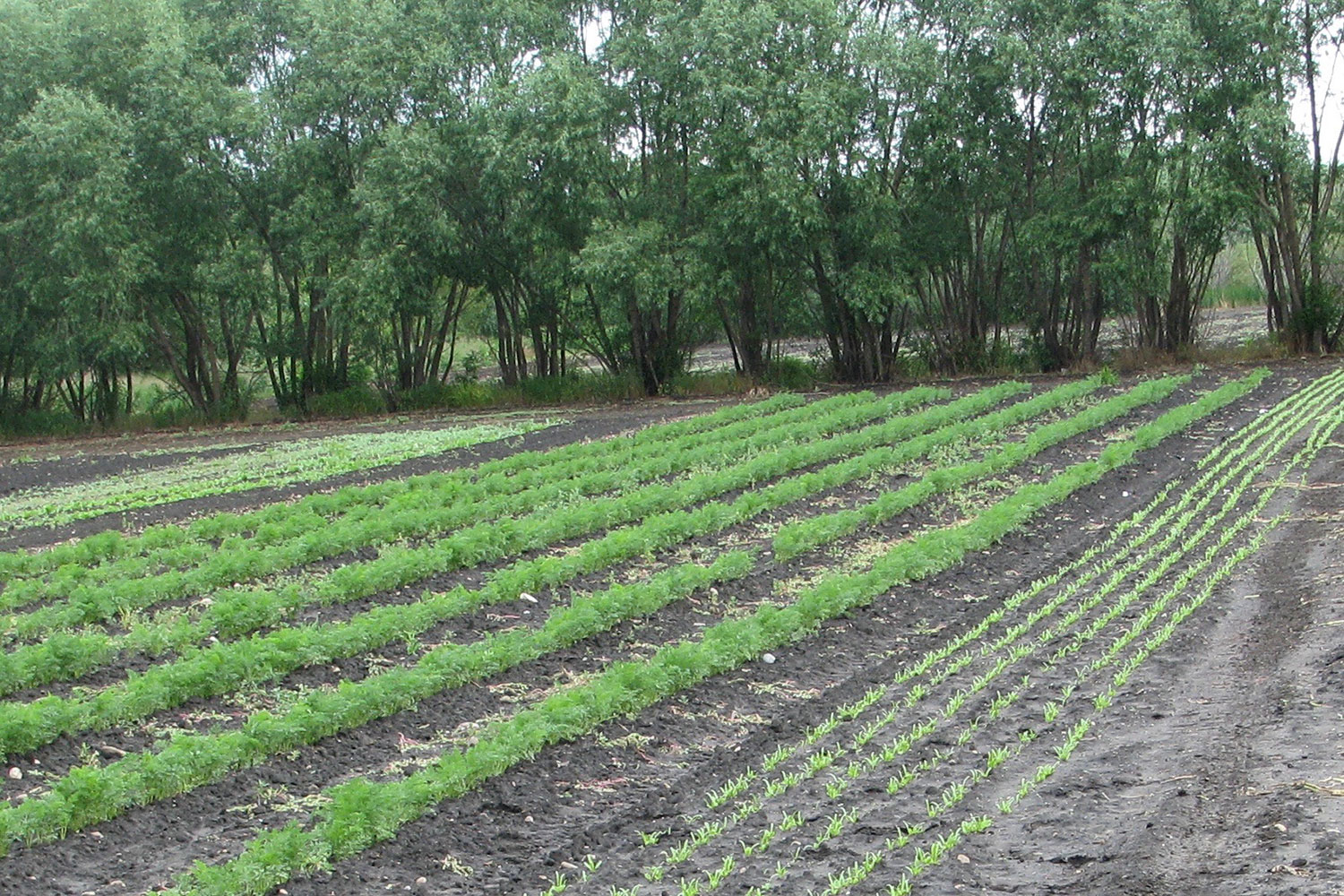
A shelterbelt will prevent strong winds from battering your rural home, yard and garden.
Donna Balzer / For CREB®Now
July 13, 2017 | Donna Balzer
Gimme shelter
 Shelterbelts provide a variety of benefits for country homeowners
Shelterbelts provide a variety of benefits for country homeownersThe phrase "eat dirt" probably came from a country dweller without a shelterbelt.
When people move to the country, the first problem they often encounter is wind. Thankfully, a shelterbelt can solve that.
Outside the shelterbelt's protective boundary, it's the Wild West. But inside, the shelterbelt provides a cozy spot where flowerpots don't blow away and dust doesn't find its way into your eyes and mouth. The benefits don't stop there either. With a well-planned shelterbelt, falling snow will pile up on your lawn, instead of in the middle of your driveway.
How do you get a shelterbelt? First you design it. Like a living fence, a shelterbelt literally stops the wind twice the distance from its height. A solid two-metre-high wood fence placed four metres from the middle of your road will pile snow in the middle of the road. Meanwhile, a 20-metre-tall shelterbelt planted 40 metres away from your road will allow snow to settle way from the road. It all comes down to physics, and it really is that simple. So, when you design a shelterbelt for your rural property, keep the distance from your road in mind.
Next, pay attention to the direction of the winter winds. If they come from the southeast, shelter the house from the southeast. To be safe, older farmsteads placed shelterbelts on three or four sides of the property, with the home, garden, sheds and road tucked safely inside.
A shelterbelt is composed of at least three rows of plants. The wind-facing edge is a hedge of large shrubs, such as lilacs or honeysuckle, to start breaking the wind. The second row should be made up of taller, deciduous trees, such as poplars or Marquette pussy willows. The final, interior row, the one closest to the home, should be a row of evergreens, such as blue or white spruce.
Outside the shelterbelt's protective boundary, it's the Wild West. But inside, the shelterbelt provides a cozy spot where flowerpots don't blow away and dust doesn't find its way into your eyes and mouth.
If you have bare soil, you are ready to plant. If not, you can plow the sod or kill the grass this summer to prep for planting next spring. You can't prep and plant in the same year – it takes a season. Either way, you can start the whole process by having a local arborist drop off some wood chips, produced as a byproduct of tree removal work. Laying down a 15- to 20-centimetre layer of wood chips kills grass and gets the land ready for planting in the spring. Place three-metre-wide rows for each row of trees, and leave a mowing strip between the rows to give the trees room to grow.
When you are ready to plant, make sure to buy the smallest plants you can find. One- or two-year-old shrubs and trees come in bare-root bundles, but they are perishable. The soil has to be ready to plant into. Small trees are easier to establish, and with the quantity required to establish a shelterbelt, you are going to be buying and planting a lot of trees. Plan to plant once, water them well and then hope for rain.
You might also want to consider placing a snow fence on the outside edge of your future shelterbelt to break the wind so your wood chips and sanity don't blow away before planting day.
A well-treed, established rural property is always a gorgeous sight. But the climate within the property will depend on the shelter you create, so it pays to get started as soon as possible.
For extra gardening help and videos from Donna Balzer see www.donnabalzer.com, where gardeners grow and beginners blossom.
Tagged: Donna Balzer | Gardening | gardens | Guest Column | Home and garden




